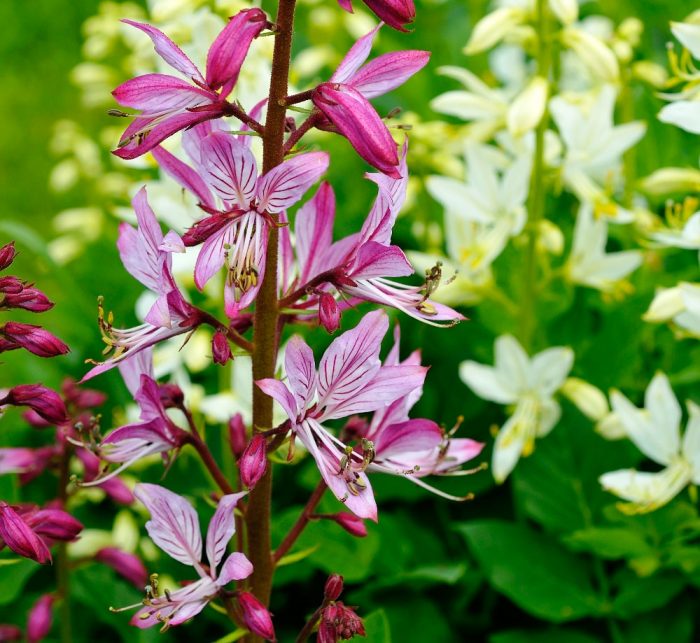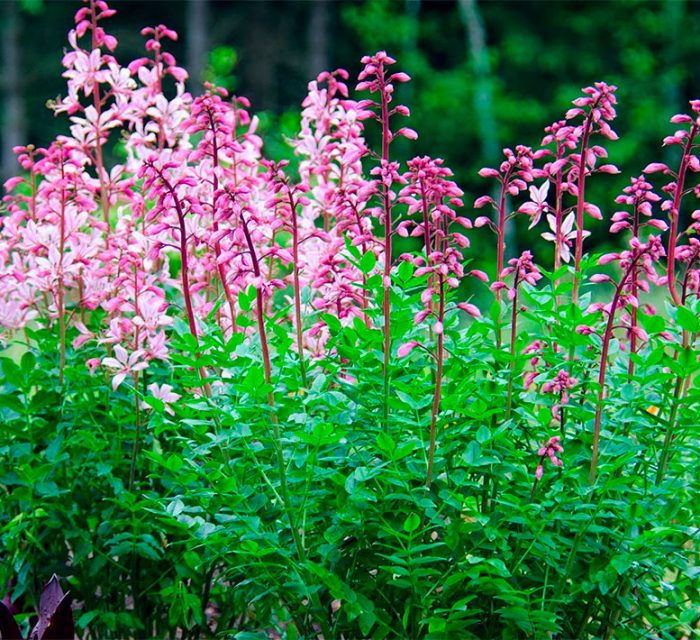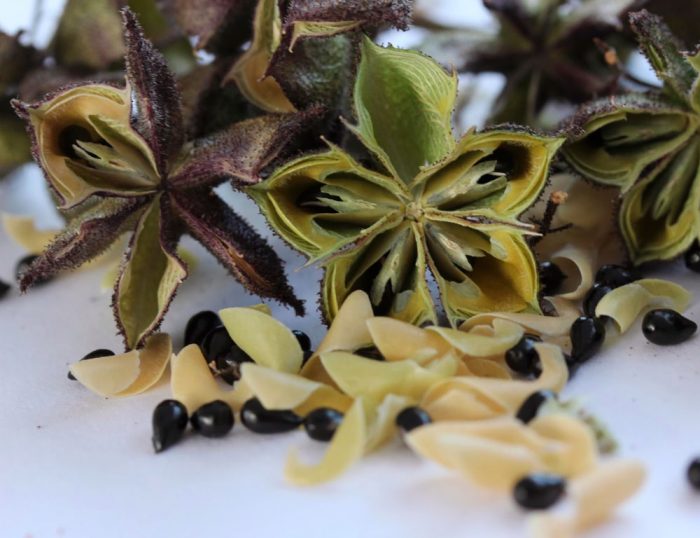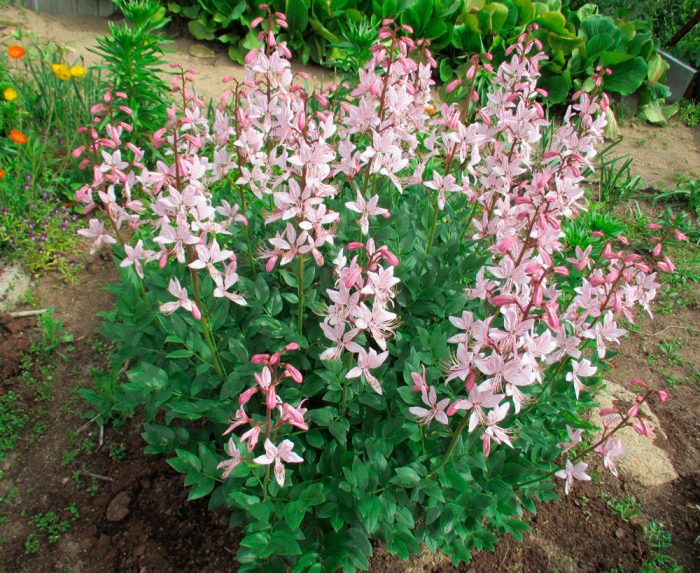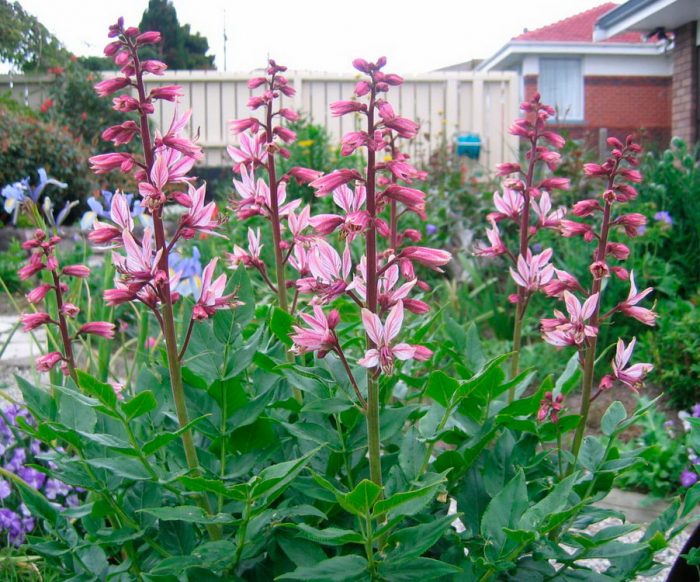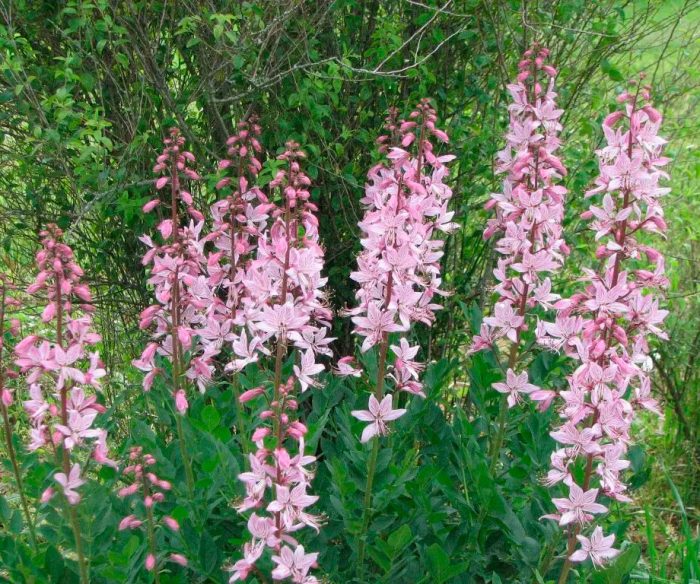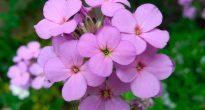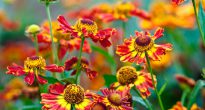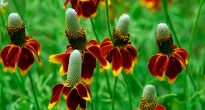The flowering plant ash, which is also called the burning bush, or dictamnus, or wild star anise, is a rather spectacular and tenacious plant that deserves the attention of every gardener.
Content
Ash tree features
Ash trees can be found in the wild in the western part of Russia, Europe, the Caucasus and in the temperate latitudes of Asia. The vitality and power of this flower proves that in nature it prefers to grow on rocky soils in the shade of shrubs, while the soil is calcareous.
The Burning Bush is a bushy plant. Therefore, after a while, in the place where only one bush grew, you can see real thickets. In this regard, if you want to create a corner of wildlife in your garden, then the ash tree will suit you just fine.
The Burning Bush is a perennial, the height of which can reach up to 100 centimeters. This plant was named "ash tree" because its beautiful dark green foliage looks very similar to the leaves of the ash tree. The people call this flower "the burning bush", because it has an unusual property, which is that this plant burns, but does not burn. This may seem like a miracle to many! And this happens because in the fruits of the ash tree there are a lot of essential oils, which quickly ignite from just one match. Even among the people, this flowering plant is often called "wild star anise", the fact is that the flowers, as well as the fruit (a star-shaped box with seeds inside) of this plant, are outwardly similar to the real star anise.
Blooming of the burning bush continues almost until the middle of the summer period. Her flowers can be colored pink, white and dark red. The flowers of such a plant have an extremely unusual aroma, and they smell like citrus.
Not so long ago, white ash was the most popular in landscape design. However, today experts want to combine all types of burning bush that they know (Caucasian ash (dictamnus caucasicus), bush ash (dictamnus dasycarpus), hollow ash (dictamnus gymnostylis) and narrow-leaved ash (dictamnus.) In this regard, all these names can be considered other names for the white ash tree (dictamnus albus).
Ash breeding
Often, in nature, you can meet a burning bush, which grows by grasping a rock. The ash tree is able to take root in almost any crevice, and grow and develop normally between stones. But if you decide to grow it in your garden area, then it should choose an area with ordinary soil. Such an unusual plant can be propagated by three methods: generative (seed) method, cuttings and dividing the bush.
Growing from seeds
Ash trees are sown directly into open ground, for this it is recommended to use freshly harvested seeds. If you postpone sowing until autumn or next spring, then seedlings will appear from some of the seeds only after 1 year. This flower reproduces well by self-sowing, if you do not want this, then tear off the formed fruits even before they are fully ripe, and seeds will spill out of them on the ground.
When choosing a site for sowing seeds of a burning bush, you need to take into account the fact that you will be growing seedlings in a seedling row for 2-3 years. If you wish, find a place in your garden that will be hidden from prying eyes, dig up the soil and sow seeds. With the onset of next spring, the seedlings that have appeared will need to be thinned out, while it is recommended to maintain a distance of at least 20 centimeters between them. Excess seedlings that thicken the planting can be carefully planted. When 3 years have passed, the grown and strengthened bushes are transplanted to a permanent place. If you decide to collect seeds from bushes grown in your garden, then keep in mind that in middle latitudes, very often they do not have time to ripen.
Dividing the bush
This plant can be propagated by dividing the bush, and the best time for this is the beginning of the spring or autumn period. If you divide the bush in the summer, then the planted cuttings can die due to excessive heat. Even in spring or autumn, it is recommended to choose a cool, cloudy day for the propagation of ash trees.
To begin with, prepare the landing holes, while there is only one requirement for them - the distance between them should be at least half a meter. After the delenki are planted, they should be systematically watered abundantly. As soon as the bushes take root in a new place and start growing, watering should be slightly reduced, otherwise rot may appear on the root system.
This method of propagation of the burning bush is most popular among gardeners, because it makes it possible to propagate the flower quickly and without problems, while the bushes will immediately begin to bloom. However, some gardeners are afraid that the delenki will get sick for a long time or even die.
Some gardeners lay stones at the foot of the area where the ash trees grow. During the day, stones absorb the heat of the sun, and then they give it to the flowers all night. Also, experts recommend choosing the western or southern side of the site to grow these flowers. The place should be sunny, but a burning bush can grow in a little shade.
Propagation by cuttings
Also, if desired, the ash can be propagated by cuttings, but this method is not very reliable. If the stalk is cut correctly, then there is a chance that it can take root. In order for the cuttings to accurately give roots, they should be systematically watered abundantly, and even before planting for rooting, the lower cut must be treated with a solution of a growth stimulating agent. Experts advise that the harvesting of cuttings should be carried out in the spring, while their length should be from 10 to 15 centimeters. For rooting, they are planted under a jar or in a mini-greenhouse.
Precautions
Whichever way you propagate the burning bush, be sure to protect your eyes and skin. It is better not even to smell the plant itself or its flowers. After all the procedures with the ash tree have been carried out, you should thoroughly wash your face and hands with soap and water.If you forget to wash, then this may cause the appearance of not very large redness, and in some cases, burns are formed. A small part of gardeners, after working with an ash tree, noted the appearance of weakness and a slight increase in body temperature.
Any breeding method will be successful if done correctly and in a timely manner. This perennial will delight you with its beauty for many years.
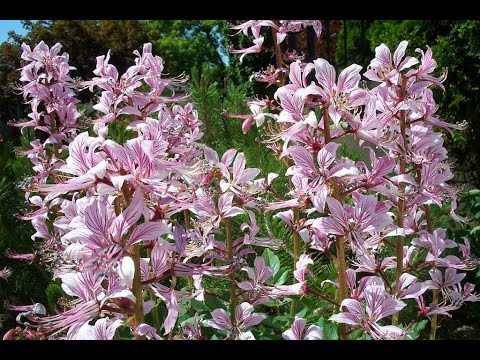

Watch this video on YouTube
Outdoor care
As mentioned above, such a spectacular plant as an ash tree can harm an unwary gardener. However, if you are careful, then there will be no problems with the burning bush. Remember that the effect of toxins is most pronounced on hot days, so be especially careful in such weather. If you do get a burn, then after a while it will surely heal. Such a flower is appreciated by gardeners for its unusual beauty, unpretentiousness and durability.
Sowing or planting, as well as growing an ash tree is relatively easy, because this flower does not differ in demanding care. But if you want the bushes to be as effective as possible and not give you any problems, then be sure to pay attention to the quality of the soil, lighting, feeding and watering.
Illumination
In nature, ash can be found in sunny areas, such as mountain slopes or forest edges. They can also grow in light shade, for example, in bushes or in a not very dense forest. It is recommended to choose a well-lit area for this plant in the garden area.
Priming
Burning bush prefers to grow on light soil that allows water and air to pass through well. Best of all, this flower will grow on poor soil, but fertile land is very poorly suited for this purpose. In order for the weed not to harm the plant, the soil surface around it should be regularly loosened. It is also recommended to cover the soil surface near the flowers with a layer of mulch (grass, peat or straw).
Watering
Ash reacts extremely negatively to moisture stagnation in the root system. In this regard, you need to be extremely careful with watering. Burning bush needs abundant watering only in hot and dry weather, as well as in the first days after transplanting. If you did not manage to water the plant in a timely manner, then you should not worry, as it is drought-resistant.
Fertilizer
You need to apply fertilizers to the soil 2 times per season, and they do this during flowering. For this, it is recommended to use a complex fertilizer. It is quite normal for an ash tree to grow, develop and bloom in sandy soil without top dressing, but in this case it will not bloom too magnificently and effectively.
Growing such a plant on your site is quite simple. It is not necessary to shelter this perennial for the winter, since it is highly resistant to frost. You should also know that this plant is not affected by practically any diseases and is not damaged by insects, because it is poisonous. In this regard, a burning bush with proper care will not give you any problems. This flower also does not need special weeding, because it is rather needed for an aesthetic purpose, since not one weed is capable of harming a given plant.


Watch this video on YouTube
Ash in landscape design
Before you start growing an ash tree, you should choose the optimal place for it on the site. First of all, it should be noted that this plant is poisonous and very fragrant. Therefore, choose a site for permanent cultivation that pets and children will not often walk by. No matter how impressive this plant looks, it is highly undesirable to decorate recreation areas with it or plant it along the paths.It will be able to decorate the garden area, even being in the depths of the flower arrangement.
The burning bush in the garden copes with the following tasks:
- it can become the main decoration of the entire composition in its highest part;
- can decorate flat flower beds;
- if you choose the right plants, then the ash tree can be used to create the effect of relay flowering;
- will be a great addition to any composition where the main tones are pink;
- goes well with various colors;
- can be an excellent backdrop for other flowering crops;
- can be used for single landing;
- looks good in juniper bushes and rockeries;
- grows best next to krasodnev, kachim, limonium, geyher and iris;
- need to be transplanted rarely (1 time in 10 years);
- cut ash flowers will last about four days.
If you prefer a rustic style of decoration, then the burning bush will become the main accent in it.
Beneficial features
It was already mentioned above about the toxicity of ash, if poisonous oils get on the surface of the skin, then burns (sometimes of the second degree) may form in this place. After a few hours, a blister appears, and when it bursts, a wound forms in this place, which heals for a long time. And the scar does not disappear for several months. However, if the weather is cool, the plant practically loses its toxic properties, so wearing gloves, you can be sure that you will not get burns.
Despite its toxicity, this plant is medicinal, due to the content of essential oils and other useful substances in it. If you know how to harvest an ash tree, then it will be very simple to do this:
- the roots are dug up in autumn or spring;
- they are dried at a temperature not exceeding 30 degrees;
- the harvesting of shoots and foliage, as well as their drying, is carried out in the summer.
Infusions, preparations and extracts of ash are used for:
- diseases of the urinary and reproductive system (including sexually transmitted diseases), as well as kidney diseases;
- worms, gas in the intestines or gastritis;
- Gospel disease, radiculitis and eczema;
- benign tumor of the uterus, mastopathy and cervical erosion;
- general weakness of the body, impotence, overwork and much more.
The healing properties of such a plant are used only in alternative medicine.
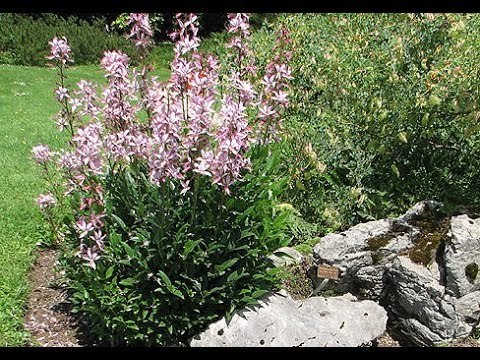

Watch this video on YouTube


